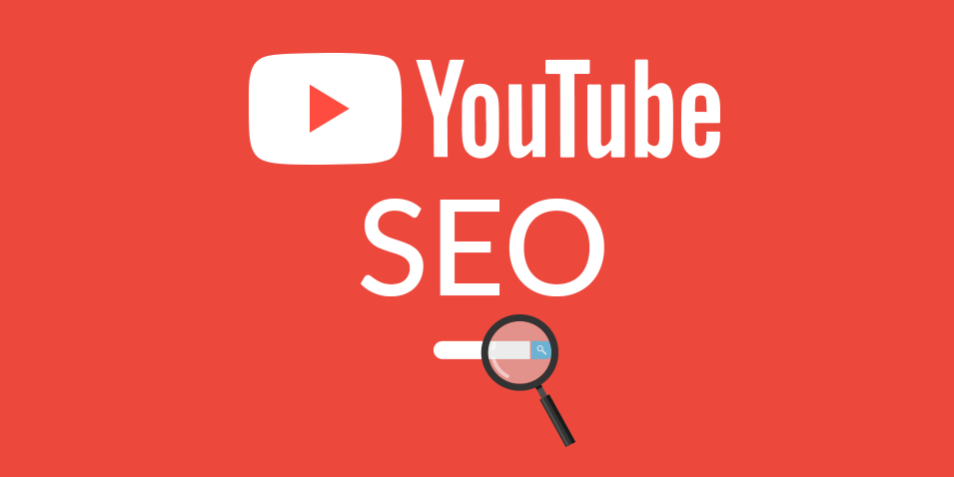A YouTube channel can be a great way for freelancers to grow their following, share their expertise or showcase their work (looking at you, video producers). But if you’re going to invest time and money into marketing yourself on YouTube, you’ll want to do it right.
YouTube has more than two billion users watching more than a billion hours of content every day. And it’s safe to assume that a good chunk of that viewership comes from Google search, where relevant YouTube videos are prominently featured. (To be sure, a healthy portion of viewers are searching directly on the platform; YouTube is the second-largest search engine in the world.)
Say you’re a designer and someone out there googles “how to make an infographic.” Google might give them these recommendations:
Wouldn’t it be great for business if your video turned up?
Before you run out and make one, consider that at the end of the day, YouTube is a search engine, and a well-baked SEO strategy can be the difference between half a dozen and half a million views. This YouTube SEO guide can help you achieve max ROI—and hopefully grow your freelance business in the process.
Understanding YouTube’s SEO Ecosystem
You probably already know that 500 hours of content are uploaded to YouTube every minute. And when you go to YouTube’s homepage or search for a video, you’re presented with a well-curated collection of relevant videos.

YouTube thrives because it serves content viewers want, keeping them engaged. It has evolved to bury all things boring, irrelevant and misleading with ruthless efficiency.
That’s why you need to make it easy for YouTube to understand why your content is relevant to a particular topic. 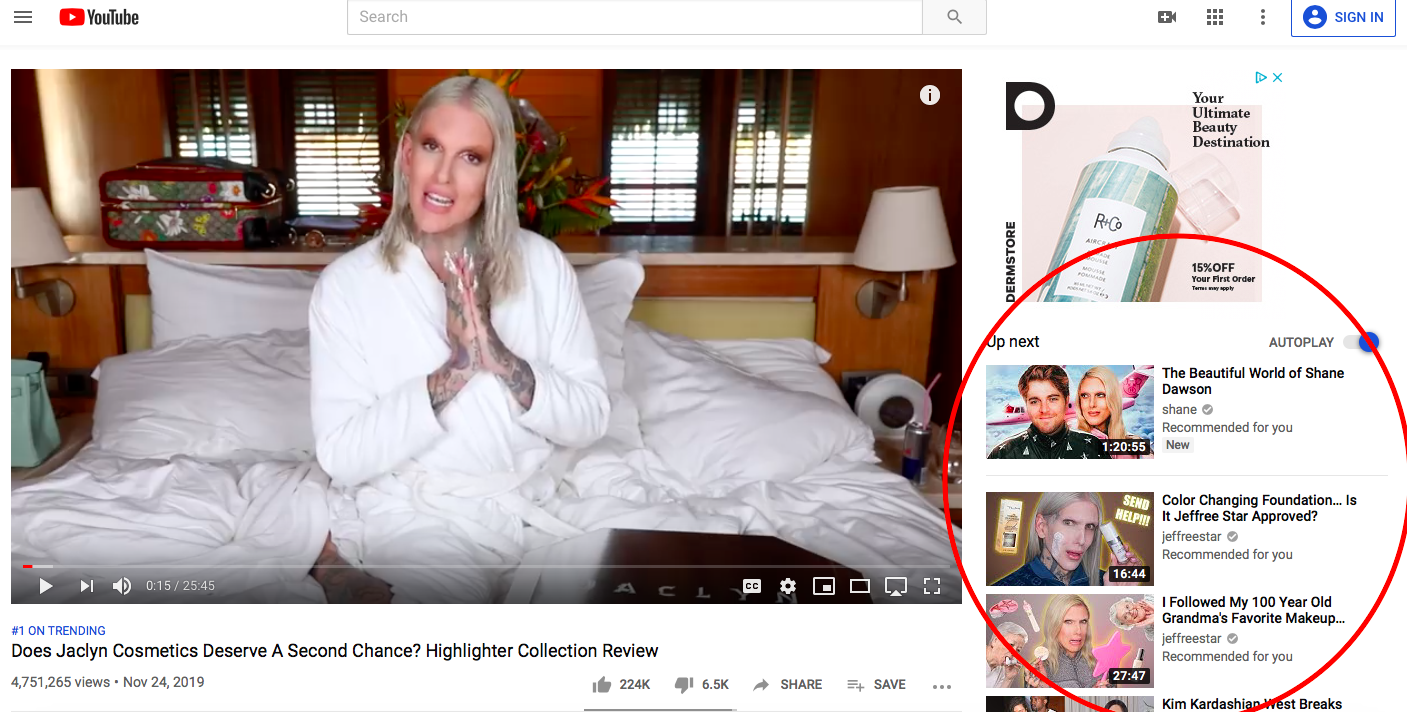
Perfecting your YouTube SEO strategy
A great YouTube SEO strategy takes 10 relatively easy steps. And like all things SEO, it begins with the almighty keyword.
1. Identify your target keywords
Identifying your target keywords is step one in the content development process. Doing this first will allow you to organically build them into your content. Remember, everything in your video is searchable (more on that later). If you neglect keywords during the planning phase, you’ve already missed an opportunity to help your videos rank.
Use a keyword tool like TubeBuddy or SEMRush to make sure you’re picking keywords that people will search for, but also aren’t so saturated that your video would never stand a chance (good luck getting that generic makeup tutorial to rank).
Since both Google and YouTube leverage semantic search, you want to focus on keywords that relate to a specific “query”, or question someone is trying to answer—like how to chop a fennel bulb.
Using TubeBuddy we can see that “how to chop a fennel bulb” is a good keyword to target because it’s specific, it’s not too competitive, and it has enough search volume to make it worth targeting. That means you can plan a video tutorial on how to chop fennel for your cooking blog and you’ll have a decent shot at ranking with related keyword searches.
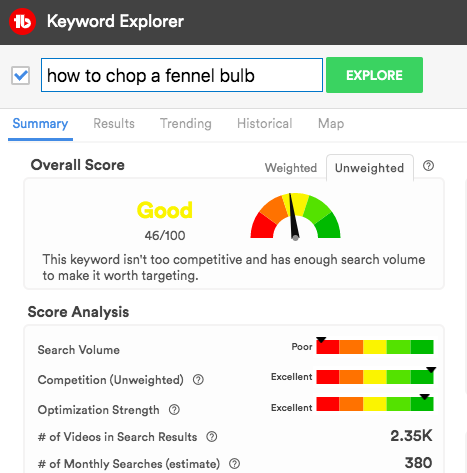
2. Make sure the content is relevant and keyword rich
When you search “how to chop a fennel bulb,” you get videos like this one:
Unsurprisingly, it’s about how to cut fennel with a keyword-rich script. This is crucial, because you can upload an SRT (subtitle) file of your script wu your video to make it easier for YouTube to understand the content of your video (more on that in step eight).
3. Name your file
Google uses every piece of information available to assess what a video is about. This includes the file name. Before you upload your file, make sure to put your main keyword in the file name. Instead of using “final-4-master-NEW.mov,” try something like “how-to-chop-fennel.mov.”
4. Create a keyword-rich title (but don’t make it weird or boring)
This is only one small piece of the puzzle, so don’t let your SEO strategy begin and end with putting your keyword in the title. But it does help. Integrate your keyword organically and make sure your title is under 70 characters and accurately represents the video.
5. Write an engaging description
Too often, YouTubers underutilize YouTube’s description field. This space is an opportunity to tell your audience—and YouTube’s crawlers—what your video is about and provide call-to-action links.
YouTube only shows the first couple lines in the description field before asking the viewer to click “Show More.” So if your primary goal is to drive traffic to your website, it’s a good idea to put your call to action first. Make it clear and simple: “Check out our website to see our three favorite fennel recipes.”
The rest of your description is an opportunity to get in some keywords, but don’t overdo it. Descriptions are shown to have very little impact on search rankings. A brief, catchy, and relevant description will serve you better than something packed with keywords.
6. Tag, tag, tag
Now we’re getting to the good stuff. When you upload your video, you’ll get the opportunity to add tags under “more options”:
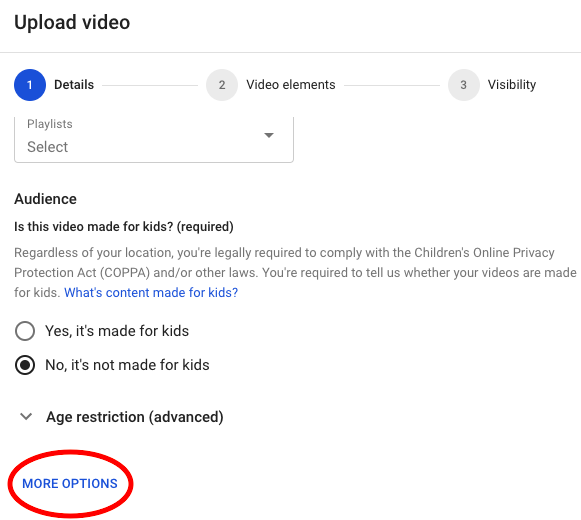
Don’t just stop at your main keyword. Go ahead and add related phrases as well. This will give you more chances to rank, since it will attach your video to more search terms and related videos. Using tools like Keywords Anywhere can help you generate a list of related keywords. You won’t want to use all of them, but it’s a good place to start.
You can narrow down your list by checking each keyword’s score and weeding out low performers. Start out with the most relevant keywords, and use a mix of both long and short-tail terms.
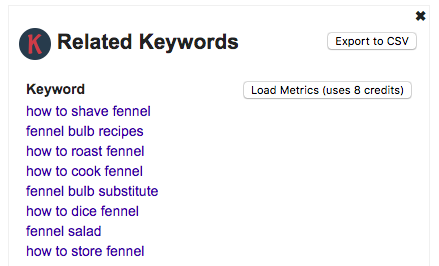
7. Select a category
YouTube allows you to categorize your own videos. While this may seem straightforward, it’s a good idea to be thoughtful when selecting a category.
Do a little bit of research into what performs well within a specific category before you assign it to your video. You can find a video’s category at the bottom of the video’s description.
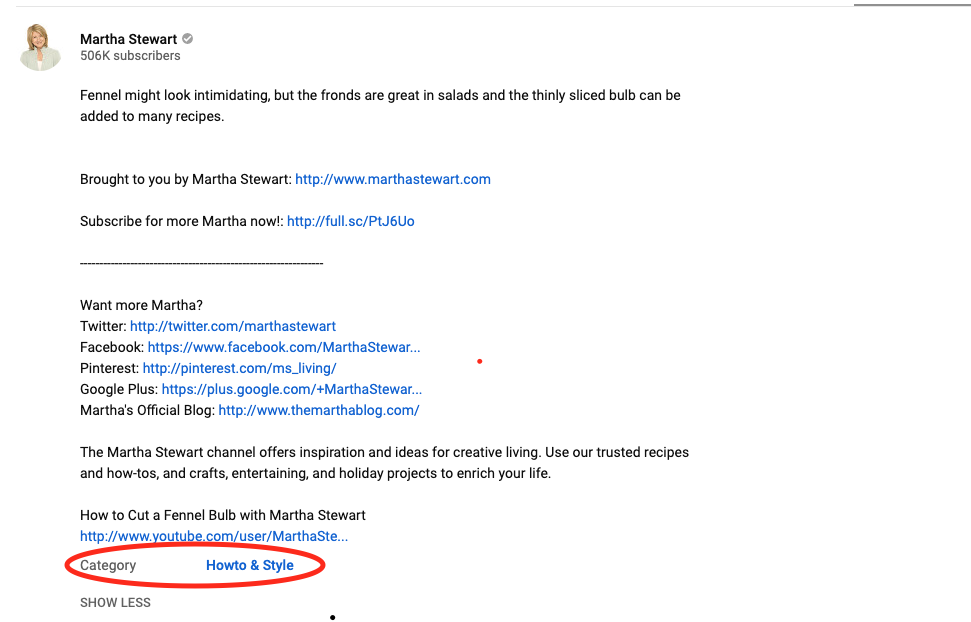
If you click on that category, you will be directed to a channel automatically generated by YouTube’s video discovery process. Explore these category pages and look at the channels and videos that perform well. This information can help you select a category that makes sense for your video.
Not only will this research help you associate your video with similar content and give it a better chance at ranking, it will also help you get more familiar with whats currently working well on the platform.

8. Add subtitles and an SRT file
Remember when we said everything in your video is searchable? Adding subtitles will make your videos more accessible and help them rank. There are a few ways to do this. You can use YouTube’s creator studio to add these manually. You can also upload an SRT file to your video. If you work with a video producer, you can usually ask them to deliver these with your video, just keep in mind some will charge extra to include this service.
Rev.com is also an awesome tool to get a transcript of your video’s audio.
9. Choose your thumbnail
YouTube rewards quality. While you can use the thumbnail (the image you see that represents the video) generated by YouTube when you upload, that image tends to come out not so great. YouTube is a visual platform and let’s face it, people respond more to eye-catching thumbnails than a video’s title.
Design high-quality thumbnails (no more than 2MB). They should be the right aspect ratio, 1280×720 (16:9) and feature an eye-catching image. You don’t want something overly detailed or confusing. People respond to faces, so using a medium shot of the person in the video is a pretty safe bet.

10. Integrate cards and end screens
These give your video relevance by connecting it with other content. Cards are the little icons that appear during a video that direct the viewer somewhere. End screens are the page you see at the end of a video directing you to subscribe and watch another video. Adding these to your video can help your video rank because it gives your audience more chances to interact with your content. This interaction indicates to YouTube your content will keep users on the platform longer. There are a number of things you can do with these tools so it’s a good idea to learn more about them.
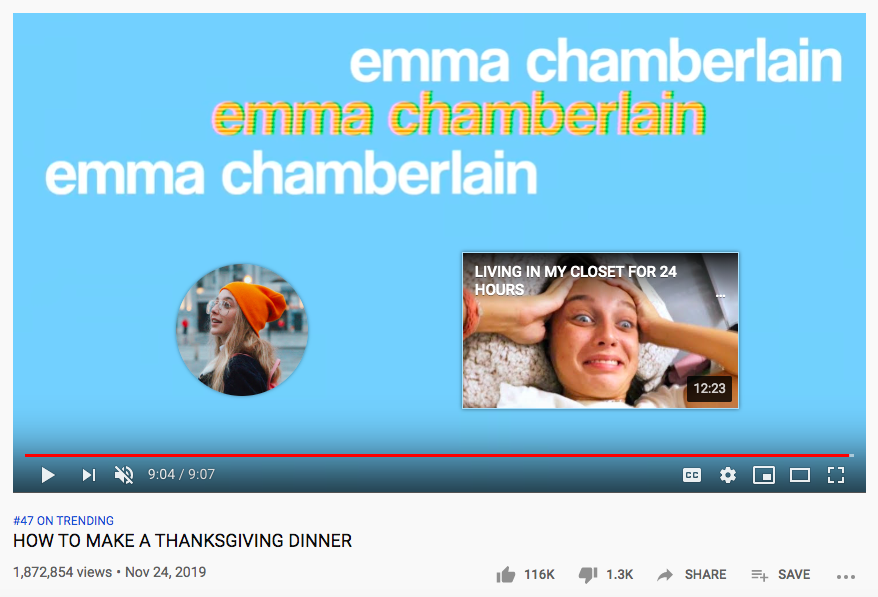
Following these strategies will give your content a better chance of rising above the chaos and help you grow your channel.
But at the end of the day, it’s vital to remember who you’re making videos for. Search engines are a tool to help your audience find your content. Optimizing for those tools alone won’t make your video something worth watching. Create videos your audience will actually want to watch regardless of SEO rankings. Use your expertise to answer their questions. Tell them a great story.
Portions of this piece originally appeared on another Contently publication, The Content Strategist.
Photo credit: iStockPhoto
